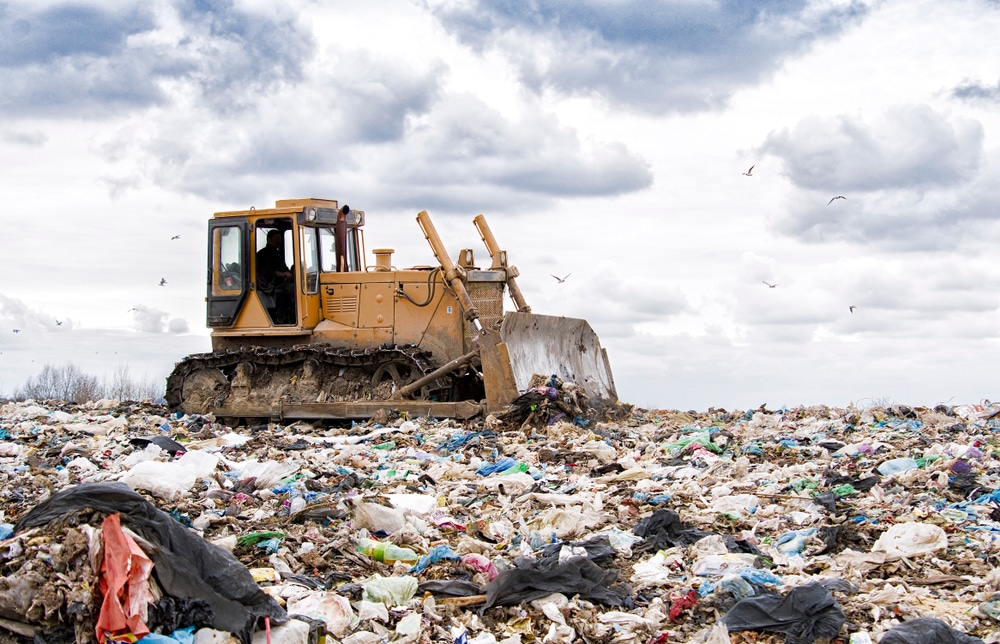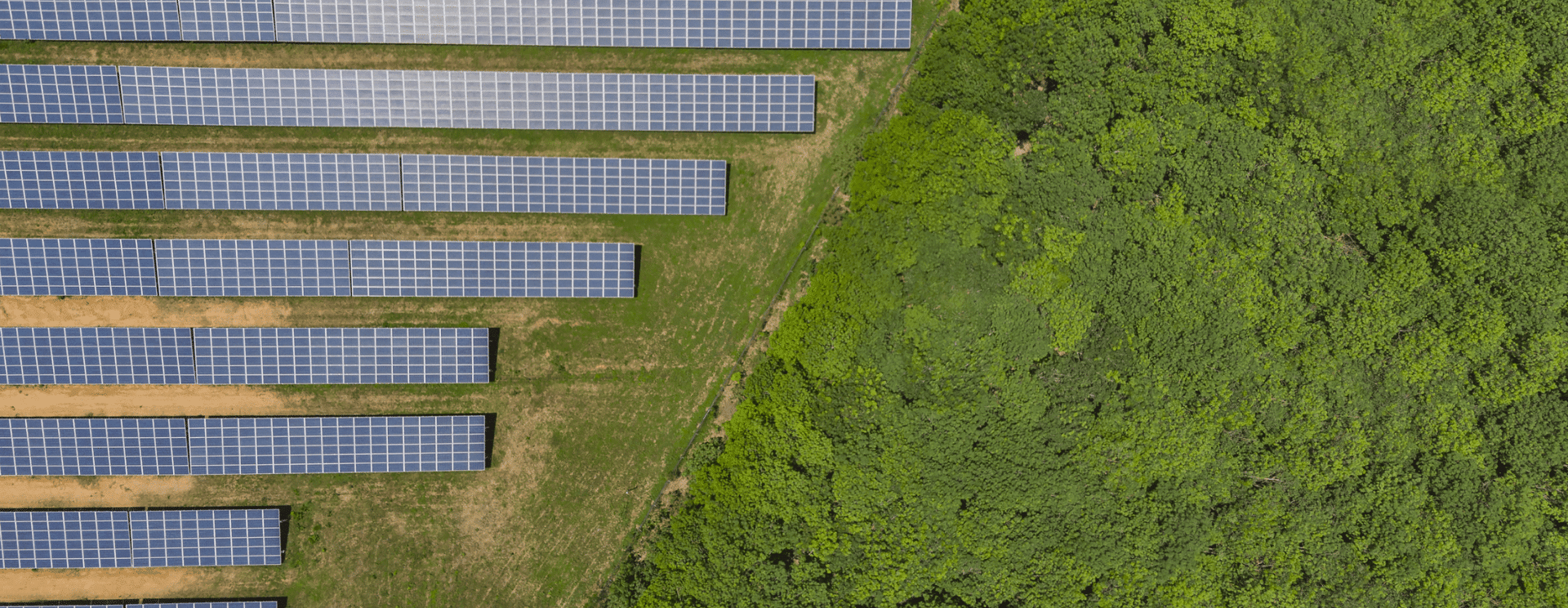Bright Idea: Converting Brownfields into Solar Farms

Go for a drive anywhere in the United States, and you probably won’t be far from a current or former brownfield site.
According to the Environmental Protection Agency (EPA), more than 450,000 brownfields litter the U.S. But what is a brownfield, and why are governmental, public, and private organizations so interested in them?
As it turns out, brownfields may play a vital role in our ongoing solar energy development. The EPA defines a brownfield site as “a property where expansion, redevelopment or reuse may be complicated by the presence or potential presence of a hazardous substance, pollutant or contaminant.”
Typically, brownfields are former locations used for industrial or commercial activities, including manufacturing, storage, or processing. Using this explanation, examples include factories, gas stations, railyards, and landfills.
Unfortunately, their ties to chemicals, heavy metals, and other potential pollutants make them unattractive development sites. Unlike greenfield locations, which are undeveloped pieces of land ripe for expansion, brownfields require rehabilitation before use.
Not Every Brownfield is the Same
Although every brownfield requires cleanup before reuse, some need more than others.
Depending on the location and surrounding area, rehabilitation could be worthwhile. Some sites have found new lives as golf courses, offices, shopping areas, mixed-use spaces, and even solar farms.
But none of this happens without investment, and even then, it could be years before a site is ready for development. However, with enough time, money, and work, formerly forgotten properties can find new life and return to the tax rolls.
From Brown to Bright
One type of brownfield receiving a lot of interest from the solar community these days is landfills.
Landfills are disposal sites for municipal solid waste (MSW), construction and demolition debris (D&C), and hazardous waste. There are two types of facilities: Subtitle D programs, which include non-hazardous municipal and industrial solid waste, and Subtitle C programs, which accept hazardous waste.
Depending on the location, your local dump can operate for decades, collecting and compacting community garbage. But, like everything else in life, the good times have to end eventually, setting the stage for decommissioning.
Once the landfill reaches capacity, workers pack it down, install mitigation systems for gas and water to escape, cap it with soil and plants to prevent contamination, and closely monitor it for 30 years.
While this might seem like the end of the story, solar energy is breathing new life into former dumps.
Making Something Out of Nothing
According to a 2021 RMI report, the U.S. has over 10,000 closed or inactive landfill sites.
Seeing an opportunity, the EPA launched the RE-Powering America’s Land Initiative. The program promotes renewable energy projects on former industrial sites like landfills, mines, and other forgotten places.
So far, the RE-Powering program has completed 530 projects and installed 2,580 MW of power, including 93% from solar and 5% wind. Even more importantly, the program has completed brownfield redevelopment projects in nearly every U.S. state.
Every state is different, but some offer financial incentives or streamlined permitting processes to rehabilitate brownfields. Certain states, like New Jersey, New York, and Massachusetts, offer both!
But what has the program done for former dumping grounds?
Small Projects, Massive Impact
Of the 530 projects touted by the RE-Powering program, 60% (318) sit on top of landfills or landfill buffers. Though most of the solar projects generate less than 5MW of power, 16 produce more than 20MW of electricity.
The EPA’s RE-Powering program is only one of many federal, state, and local projects promoting brownfield redevelopment. For example, Governmental agencies like the Departments of Energy and Transportation tackle national initiatives, while others, like the Appalachian Regional Commission, focus on specific areas.
According to the EPA, its programs and grants, including the Brownfields Revitalization Act, are making a difference. Through 2023, grant recipients leveraged about $20 per EPA brownfield grant dollar received. But grant money is often only one part of the brownfield puzzle. The agency highlights strong partnerships between local governments, organizations, and public/private groups to find more money.
Despite the financial costs, federal, state, and local initiatives are addressing several long-term issues at the same time. They are finding new and creative ways to reuse brownfields and meet increasing electricity demand.
Why Landfills Make Great Solar Sites
Let’s be real: landfills are often not great spots to put a community park. However, they’re excellent places to set up a solar site.
But what makes a landfill conversion so alluring for solar development? Turns out former dumping grounds are a popular choice for several reasons.
- Landfills are not prime real estate development targets. They require money, time, and labor to rehabilitate and carry the stigma of former pollution.
- Dumps tend to be in areas near roads and electrical transmission lines. Their placement makes it easier for solar energy producers to move power from the site to the electrical grid.
- Landfill sites may already be zoned for renewable energy development, streamlining the planning and permitting process.
- Solar sites near populated areas like towns may have access to guaranteed power buyers, especially in high-demand regions.
- Landfills have a welcoming landscape for solar energy, with little shade, unobstructed views, and even hilltop access in some instances.
- The land is typically cheap, making it attractive for some buyers willing to pay for rehabilitation.
- Depending on their size, dumps can accommodate community- or even utility-scale projects.
Combine this with the growing number of local and state incentives available, and it makes sense why landfills have become part of the clean energy game plan.
Potential Concerns
Like any other prospective site, former landfills come with considerations affecting the project.
Brownfields require special attention because of former pollution, hazardous waste, or other environmental concerns. Bulldozing everything in sight creates more problems than solutions, and developers must show restraint.
Solar developers need to be careful around the cap.
Grading the land is one of the first things developers do when they install a solar array. Unfortunately, grating and excavating to level land for the solar racking can damage the cap. If equipment damages the cap, contaminants and gas could escape into the air and water.
To prevent unnecessary damage, stage heavy equipment away from the cap. If crews need to grade or excavate the area, do it carefully. And ALWAYS follow state and federal rules to avoid dangerous situations.
Don’t penetrate the cap or damage the landfill’s mitigation system.
The cap prevents methane and other gases from escaping outside specially controlled areas. Damage to the system could result in dangerous leaks that put the entire operation at risk.
If an employee damages the mitigation, monitoring, piping, or other systems, it could result in dangerous gases escaping. The gas could then ignite if it encounters an accidental spark or arc.
Dust poses a risk to workers and the community.
Dust is simply part of the job during every solar installation but takes on a different tone at a landfill site.
During grading and installation for a standard solar project, most crews use water trucks to moisten dirt and keep dust from flying around. The problem is that water trucks are heavy.
Heavy water trucks and other equipment can damage underground gas and drainage systems. They should not drive on the cap if they don’t need to and be careful when required to be near fragile systems.
Erosion and stormwater runoff are always a threat.
Landfills have systems in place to remove water from a capped site. When rain or other liquid enters the landfill, these systems quickly flush it out to prevent damage.
When crews grade and excavate sites, it opens the door for moisture to enter the system. Grading removes vegetation and dirt from the top of the cap, allowing water to penetrate. When that happens, it can flood landfill gas piping, preventing gas extraction.
Hard rain can cause more cap erosion and slope instability, reducing the cap’s effectiveness.
New Life for Old Sites
Thanks to their location and design, landfills have become an attractive choice for solar companies.
Beyond generating low-cost electricity on redeveloped land, landfill solar farms create a host of other benefits, including:
- High-paying jobs in a rapidly expanding solar industry
- Increase tax revenue for communities where solar farms live. Solar companies reintroduce vacant or abandoned properties to the tax roll.
- Fewer brownfields. When companies clean up and redevelop sites, they remove many (but not all) contaminants from the location.
As solar energy expands across the U.S., more landfills will inevitably become solar sites. For solar EPCs, utilities, and innovative companies, there are plenty of opportunities to take advantage of ongoing development programs.
These programs streamline the solar process, especially in states embracing renewable energy across the Northeast and mid-Atlantic. Other programs may be available on a state-by-state basis but could require more research.
Are you interested in brownfield redevelopment? Programs like the RE-Powering America’s Land Initiative are changing the landscape, but it’s a long-term effort requiring time, money, and work.
Talk with your state’s environmental representatives or contact your regional EPA office to learn more.


